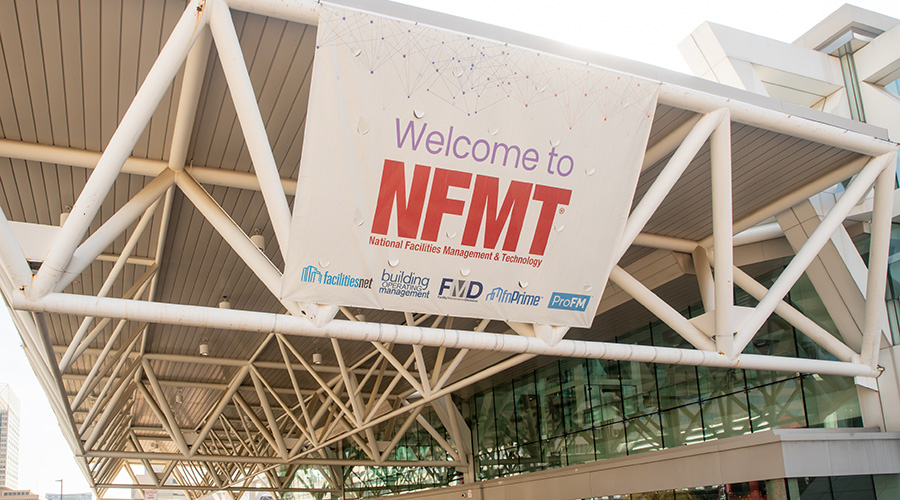Airports: Flying High
Design and development trends in the post-9/11 world position major airports to reap the rewards of an industry on the rebound
The aviation business has a new appearance. The most obvious and serious factor that has reshaped the industry’s processes is the security screening requirements mandated after the 9/11 tragedies. But the long-term impacts of airline deregulation may have an even bigger impact on the travel environment.
As airlines face continued financial challenges, they increasingly look to airport owners and their consultants to help maximize the use of existing gates and related terminal facilities, streamline the check-in process, facilitate passenger movement from airport curb to boarding gate and create an overall rewarding travel experience for passengers.
Though designers and facility executives still have to do more with tighter budgets, airport design and development trends have surfaced to address these challenges.
Air traffic figures for 2005 are expected to exceed the previous records of 2000, and the Federal Aviation Administration predicts 1 billion air travelers annually by 2015. The air carriers, however, are changing. As the legacy airlines grapple with record debt and rising jet fuel costs, the low-cost carriers led by Southwest Airlines and JetBlue Airways are boasting lower operating costs and higher customer-satisfaction ratings.
Airport design is more closely tied to good business sense than ever before; therefore, the issue that rises to the top is cost. It’s no longer a question of what an airport needs, but what it can afford.
Financial Planning
Integrating financing into every step of the planning and design process is not only desirable, it has become essential. Financially integrated airport planning and design is a smart means of preparing for aviation’s future.
There are numerous examples of airports making affordability a priority:
• The Port of Seattle trimmed more than $1 billion from its original plan for Seattle-Tacoma International Airport to serve 52 million annual passengers in the future. A facility planning effort undertaken in 2003 sought the most cost-effective and flexible strategy for developing the airport’s terminal, landside and support facilities to match its airfield capacity when a third runway is commissioned later this decade. The airport’s Comprehensive Development Plan identified ways to better use existing facilities rather than construct new ones. The plan capitalized on increased spatial efficiency, a byproduct of airlines’ use of electronic ticketing and check-in, to reallocate space to other terminal functions.
• As part of its master plan update, Gerald R. Ford International Airport in Grand Rapids, Mich., sought to address the efficiency of its security screening processes. After extensive examination of passenger check-in, hold bag screening, passenger screening and general circulation processes in the 12-gate terminal, the airport determined that it could meet its needs at a cost that would not greatly impact airline rates and charges. The result is larger passenger screening areas, a semi-automated inline baggage screening system and a new hold bag screening area.
Maximizing available space
In early June 2004, the $927 million redevelopment of Chicago’s Midway International Airport was completed after nearly nine years of phased design and construction. The new airport complex provides nearly three times more passenger terminal space than its half-century-old predecessor, on essentially the same square-mile parcel of land.
In the 1960s, Midway Airport claimed the title of world’s busiest airport when its annual passenger volume climbed to 10 million. However, O’Hare International and its more spacious and updated facilities sent Midway into a two-decade-long tailspin. By the mid-1990s, Midway had returned to its 10 million-passenger peak. With low-fare carriers entrenched, the city of Chicago Department of Aviation moved to increase the airport’s capacity.
Included in the Midway development program were a six-level, 3,000-space parking garage, which opened in 1999, and the relocation of a major urban thoroughfare to expand the site and allow for a two-level roadway. The gem of the program was a new three-level, 941,000-square-foot passenger terminal with three concourses providing 43 airline gates. Its design capacity was pegged at 25 million to 30 million passengers annually. By year-end 2004, Midway’s passenger count exceeded 19.7 million.
Given that Midway Airport is dominated by low-fare carriers Southwest and ATA, keeping costs in check was paramount in the programming, planning and design processes. The city sought an airport that would provide a positive passenger experience and meet service expectations, while challenging the designers to hold the cost per enplaned passenger to a fixed amount.
Cost containment was achieved in many ways, including use of conventional, readily available structural systems components rather than custom-made structural systems; frugal assignment of dollars to areas of maximum impact, such as the concessions court; selection of sturdy materials for maintenance purposes; and elimination of frills. Various common-use systems not only provide product consistency for all airlines and their passengers but also deliver O&M benefits to the airport.
The design team worked hard to maximize the building’s function and aesthetics while keeping it appropriately scaled for its south Chicago neighborhood. The final design scheme was based on large geometric forms. Materials, including buff-colored brick, metal panels, glass and steel, create a positive visual impact and enhance the building’s maintainability.
Bang for the buck
Programming for a new or improved airport facility is weighted toward maximizing value in those areas where passenger impact will be the greatest. Trends suggest departing passengers prefer to spend their time beyond security — in the gate areas rather than in the terminal building. In response, airlines and airports are committed to increasing the number of self-service check-in options so passengers can proceed to security expeditiously. The arrivals hall, on the other hand, increasingly is being enlarged and equipped with added services to support the meeter-greeter contingent concentrated on the fringes of the secured area.
Similarly, investment beyond security is most beneficial in areas where exposure to passengers is highest. Concessions concentrated in high-traffic areas, such as concourse entrances, as well as in remote gate areas make sense because they capture passenger dollars before boarding time.
The nation’s newest passenger terminal at Dallas/Fort Worth International Airport is scheduled to open this month. The new International Terminal D features 29 gates and capacity to accommodate 32,000 passengers daily. The 2 million-square-foot terminal complex integrates a Grand Hyatt Hotel and eight-level parking garage and is served by three-tier roadway.
A terminal of this size is almost
a city within a city. The design attempted to enhance the experience of passengers moving through the terminal by applying principles of urban design theory to the organization of interior spaces.
Such urban design elements include major landmarks for ease of passenger wayfinding, connecting boulevards, open plazas with concession “villages” and displays of public art throughout. From the flow of the main throughways to the definition and placement of internal landmarks, such as the concession villages, emphasis was placed on visual connectivity. Major circulation passages are oversized to accommodate moving walkways and to allow increased use of service carts as volumes of older travelers increase. In Terminal D’s ticketing lobbies and security checkpoints, departing passengers are calmed by orderly spaces, instantly available information, daylighting and spatial openness.
The striking presence and visibility of the new terminal, its state-of-the-art amenities and technologies, and its easy connections to other terminals and transportation are expected to enhance the competitive advantage of DFW International.
Development trends
Two airports in Florida provide examples of how airports are embracing trends in facility design and construction.
The recently opened Airside Concourse C at Tampa International Airport used the design-build project delivery method. The design-build team expedited design and construction, delivering the new 16-gate facility in just 24 months. Southwest Airlines is the primary tenant of the $135 million concourse.
And in the Florida panhandle, sustainable design is a driving element for the new greenfield Panama City/Bay County Airport. The impetus for creating a $242 million replacement for an existing site-constrained airport can be traced to public opposition to a 1997 recommendation that the existing airport’s runway be extended by filling in a portion of a bayou.
As planning and conceptual design proceed, the airport owner seeks to have its facility become the first airport certified by the U.S. Green Building Council for Leadership in Energy & Environmental Design (LEED). Among the green components to be incorporated into the new airport design are:
• Materials, such as carpet and ceiling tile, that have high recycled content or are recyclable.
• Windows to maximize daylighting in the terminal, while controlling heat load.
• Use of materials native to northwest Florida to minimize transport needs and reflect the region’s character in the airport’s facilities.
• Re-use of gray water for landscape water needs.
• White or light-colored roof materials to minimize heat islands and increase cooling efficiency.
• Carbon monoxide monitoring in building management systems to optimize ventilation and indoor air quality.
Whether the issues are tighter budgets or security screening, expanded technologies or aesthetics that mesh with an airport’s surroundings, continuing to concentrate efforts — and dollars — in the areas of greatest passenger importance will surely deliver the greatest return. Airports that rise to the challenge of balancing today’s many issues will design cost-effective structures that best serve their passengers’ needs.
Evan C. Futterman is chairman, HNTB Aviation Services. Also contributing to this article were Al Michejda, national director of aviation architecture, and Vlasta Poch, design principal architect. HNTB provides aviation planning, design and business consulting services to airport owners, operators, airlines and others worldwide.
Related Topics:











